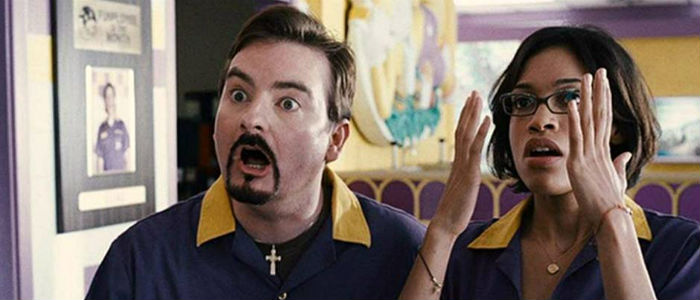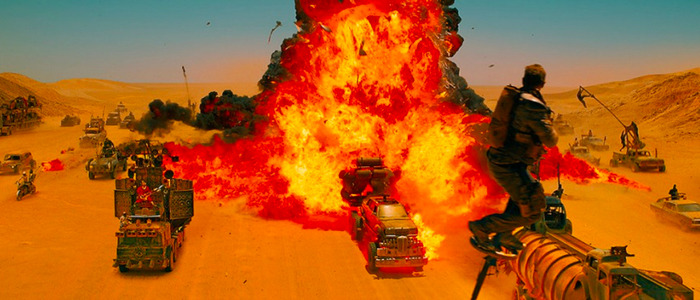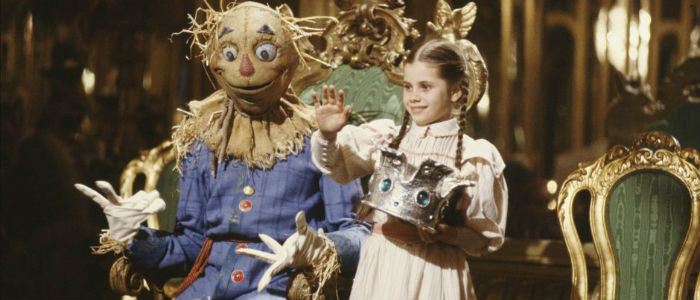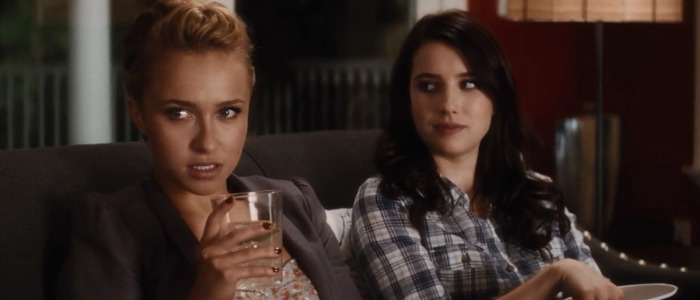The Not-So-Secret Ingredient To Making A Successful Sequel More Than A Decade Later
There are hundreds if not thousands of sequels out there in the ether, and while they're not inherently good or bad their existence typically makes sense. A movie is popular, and within a couple years it gets a sequel. It's basic Hollywood math as studios and filmmakers understandably want to strike while they still have the public's attention. Sometimes, though, for all manner of reasons, the wait for a sequel is far, far longer.
Mary Poppins Returns hit theaters a whopping 54 years after the original, and it's still a bit too soon to say if the half-century gamble was a wise one. The critical reception has seen something of a stumble, but Disney's coffers will most likely be filling up over the next few weeks. It helps that like most classic Disney films, Mary Poppins (1964) has remained in the public eye since its release making the character's return to the big screen an easy sell. Most delayed sequels don't have that same advantage.
There are just over forty sequels (by my count) that arrived more than ten years after the preceding film, and only a quarter of them managed to meet or exceed the earlier film's critical reception. The results are better on the commercial front with just over half of the sequels earning big even if they don't always overcome their predecessor's take at the box-office. Is there a common thread between the success stories or the duds? Some shared factor explaining why some find an audience again while others are ignored? A conclusive revelation suggesting the necessary ingredients for a worthwhile sequel?
Let's find out together.
Successful Sequels
Someone else came home ahead of Mary Poppins in 2018, but while her long-awaited return came on a flying umbrella his came at the end of a butcher knife. The math on Halloween (2018) is open to a bit more interpretation when it comes to measuring how long Michael Myers has actually been gone. It's been nine years since the character graced the screen in Rob Zombie's Halloween II (2009) but sixteen since the Michael who started with John Carpenter's original appeared in 2002's Halloween: Resurrection. David Gordon Green's film is a direct sequel to the 1978 original, though, making it a full four decades between films. That's fine on a narrative level, but for our purposes, the middle date range seems more applicable. Like Disney's magical nanny, Michael and the Halloween films are part of pop culture at this point meaning the gap certainly hasn't felt like forty years. Hell, Jamie Lee Curtis even returned in the 2002 film too for one "last" faceoff with Michael. That factor was a big selling point for the new film too, and their meeting was played up far more dramatically this time around. It created a "must see" mentality despite fans having already seen it twice before in 1981 and 2002, and it worked to make the film the biggest hit of the franchise. It's worth noting that Green and company made the film for $10m and saw it gross over $250m. That's ultimately the only math that really matters.
Halloween succeeded without Disney, but there's a clear advantage to being associated with the brand as evidenced by four of the highest grossing delayed sequels. Star Wars: The Force Awakens (2015) also had the pop culture bump as George Lucas' galaxy far, far away has been a steady presence for nearly forty years, but the film shattered all manner of expectations arriving a decade after the previous Star Wars film and thirty-two years after its narrative predecessor Return of the Jedi (1983). There was no way this movie wasn't going to be a hit, but $2 billion and counting is an impressive pile of space credits. The same can be said for Disney's other three films here, all animated, and all from their Pixar studio. Toy Story 3 (2010) took eleven years, Finding Dory (2016) waited for thirteen, and Incredibles 2 (2018) arrived fourteen years after the original. All three were greeted with open arms, critical praise, and boatloads of cash totaling over a billion dollars each.
The name Steven Spielberg carries almost as much weight (although not always as much marketing muscle), so it's no surprise to see two films bearing his name make the cut as long time coming but successful sequels. Indiana Jones and the Kingdom of the Crystal Skull (2008) swung into theaters nineteen years after Indy's previous crusade, and while it scored the lowest critical approval it also earned the most money ($786m) by a wide margin which is more than enough to make it a win. He didn't direct Jurassic World (2015), but its rebirth fourteen years after Jurassic Park III (2001) has his sticky fingerprints all over it. It grossed a bajillion dollars, roughly, and while the critical response is dramatically lower than Spielberg's original it still fared noticeably better than either of the previous sequels. Yeah, I don't understand why either.
Big-budget action/sci-fi sequels to beloved older films can go either way, but a few fared well enough in recent years to make this half of the list. George Miller returned to the desert for Mad Max: Fury Road (2015) thirty years after Max squared off in and out of the Thunderdome, and it was both a critical and commercial hit. It was also damn expensive, though, meaning its $378m worldwide gross isn't quite as impressive as it sounds. Still, it and its subsequent Blu-ray/DVD sales are enough to consider it a success. No one really expected a sequel to 1982's Tron as it was neither a hit nor a critical darling, but Tron Legacy (2010) arrived twenty-eight years later anyway. It received a critical drubbing but earned $400m worldwide – great news if you don't consider its $170m budget – and as with Max's adventure, it ultimately inched into the black in part through home video sales. Roland Emmerich's Independence Day: Resurgence (2016) invaded our nightmares twenty years after his blockbuster original to disappoint critics and audiences alike. Rotten Tomatoes' audience score matches the critics' at 30%, and that almost never happens for blockbuster movies. It's an expensive flick, though, meaning its $389m gross deliver a small profit at best. Consider all three of these to be "skin of their teeth" success stories. By contrast, the more modestly budgeted Live Free or Die Hard (2007) yippee ki-yay'd into theaters after twelve years and made nearly four times its $110m cost. The only real downside to this one is that it's where Bruce Willis and Kevin Smith made contact and began planning Cop Out (2010).

Smaller belated sequels are less of a risk, but the odds don't typically favor them. Of the handful that did work, though, a few fell under the action genre banner and gave audiences slightly bigger and more stylized takes on what came before. Shaft (2000) came kicking in the door twenty-seven years after the previous sequel, and while Richard Roundtree reprises his original character for a cameo the film belongs to Samuel L. Jackson as his equally badass nephew. It earned just over twice its budget making it a success, and curiously, the next sequel – Son of Shaft – is set to arrive in 2019 making this one of the longest-running active film series in existence. How daunting must it have been to not only follow up Hitchcock's Psycho twenty-three years later with Psycho II (1983) but to do so while completely ignoring creator Robert Bloch's own sequel novel? Critics thumbed it down, but it made $34m on a $5m budget ensuring that Norman Bates would spy on even more showers in the future. XXX: The Return of Xander Cage (2017) rode a fur-trimmed snowboard into theaters twelve years after its Vin Diesel-less predecessor and proceeded to nearly quadruple its budget. It's not uncommon for big movies to make more money overseas than they do domestically, but this one bombed here in the US tapping out at a sad $44m leaving the remaining $300m to be collected elsewhere. It's unusual as American audiences don't typically have better taste in films than the rest of the world.
Prestige pictures don't often get sequels, let alone follow-ups decades later, but when they do the results are as unpredictable as ever. The Color of Money (1986) came twenty-five years after the classic The Hustler, and along with the returning Paul Newman the film features Tom Cruise and director Martin Scorsese. All that cachet on a $14m budget! It was what they called in the 80s, a "big deal," and it succeeded accordingly with critics and audiences to a $52m gross. Rocky Balboa (2006) entered the ring sixteen years after Rocky V (1990) and not only delivered a big payout – $155m on a $24m budget – but also earned the best critical response for the franchise since the original. If we're being honest, its success may also have been a big reason why Creed (2015) got the go-ahead as it showed there was still an audience for this scrappy underdog fighter's story. The Godfather Part III (1990) whacked its way into theaters sixteen years after part two and is considered by history to be a failure, but while the film itself is a misfire curiosity helped inch it into the black with $136m at the box-office.
Finally, some belated comedy sequels are able to recapture the magic better than others with the help of low budgets and faithful fanbases. The Odd Couple II (1998) saw opposites attract once again twenty-nine years later, and while it banked $18m on a $4m budget their reunion really should have been something far more special. Super Troopers 2 (2018) came seventeen years after its predecessor but at a $31m gross it's a borderline success story – it could easily have landed in the section below. My Big Fat Greek Wedding 2 (2016) hit fourteen years after the first and wasn't nearly the hit the original was, but $88m on an $18m budget is still worth celebrating. The Best Man Holiday (2013) also celebrated fourteen years after the original and delivered a notable hit in the process earning nearly five times its $17m budget. Director Malcolm D. Lee's filmography features more than a few modest comedies that earned back a healthy multiple, and that includes Barbershop: The Next Cut which arrived after twelve years, and while it's the lowest grossing of the franchise its low budget means it's still a success. Kevin Smith hasn't been nearly as consistent, but Clerks II (2006) came twelve years after his indie debut and made a 5x return on its $5m budget. Someone else came twelve years later resulting in Bridget Jones' Baby (2016), and as has become the clear pattern here it succeeded to the tune of $211m despite that being noticeably less than previous films earned. Dumb and Dumber To (2014) tripped its way into theaters eleven years after a misguided dud of a prequel, and while it paled beside the original it still banked $169m on a $40m budget. Nothing stupid about that!
Follow-Up Failures
Some big-budget sci-fi/action extravaganzas lure massive audiences back to theaters in droves, and others don't. That latter group includes Blade Runner 2049 (2017) which arrived thirty-five years after the original with star Harrison Ford along for the ride. He, of course, insisted his returning character be killed off just as he did for his other belated sequels The Force Awakens and Witness 2: Closing the Book. The film made far more money than Ridley Scott's 1982 original, but its $150m price tag (the production budget which doesn't include marketing costs that typically double the entire cost) means it's still most likely in the red despite some solid home video sales. Terminator 3: Rise of the Machines (2003) is another squeaker earning a healthy chunk of change but costing far too much in the process. It arrived twelve years after Terminator 2: Judgment Day (1991) and made less money. That said, it, in turn, outearned the two sequels that followed in 2009 and 2015. All three of these could probably be argued into the success section above, but monster budgets sink the biggest ships.
Plenty of smaller genre efforts failed in their eventual arrival too including one with the second-longest wait of any sequel, 1985's Return to Oz. A whopping forty-six years passed from original to sequel, and the result was something truly special. Critics hated it, the film bombed in theaters, and a few million kids were permanently scarred after seeing it. Count me in the thumbs up camp on Sylvester Stallone's Rambo (2008), but audiences in general weren't as pleased making it the lowest growing entry in the franchise. The normally reliable John Carpenter fell victim as well with the only sequel of his career, Escape from L.A. (1996), which arrived fifteen years after the original and in addition to not being good is also quite bad. Carpenter and Kurt Russell together are gold in every other instance, but here? Not so much as it's a repetitive poor man's riff on the original and a more expensive one to boot – it earned the same $25m but cost $50m compared to the original's $6m. Did you even know they made a Basic Instinct 2 (2006)? It opened its legs fourteen years after the original and earned $38m which is, unfortunately, less than the $70m it cost to make. Watch it if you get the chance and wonder aloud where that money went exactly. Scream 4 (2011) is the best Scream sequel and I'll hear no dissent on the matter, but its arrival eleven years after part three left in spinning in the wind at the box-office. Home video has probably pushed it fully into the black at this point, but it really deserved better.
Wall Street: Money Never Sleeps (2010) brought back veteran Michael Douglas twenty-three years after the original, and while critics weren't quite enamored audiences responded only slightly better resulting in a $134m take on a $70m budget which is not nearly enough to satisfy the greedy. Danny Boyle brought his heroin chic friends back with T2 Trainspotting (2017) twenty-one years later, and it struggled to reach $41m worldwide. Author Larry McMurtry saw two belated sequels arrive years after their beloved originals, and both tanked. Texasville (1990) came nineteen years after The Last Picture Show, an American classic, and managed a measly $2m at the box-office. The Evening Star (1996) arrived thirteen years after Terms of Endearment and was nearly DOA with only $12m in earnings. Why anyone would attempt a follow-up to Chinatown is anyone's guess, but The Two Jakes (1990) arrived sixteen years later anyway and only earned back half its budget. On the bright side, though, it wasn't directed by a pedophile.
Eight comedic sequels found some degree of success more than a decade later, but three didn't. None of these should surprise you. Blues Brothers 2000 (1998) crashed and danced its way into theaters eighteen years after the original classic, but with half a Belushi and even less heart, it barely earned back half of its $28m budget. Zoolander 2 (2016) actually earned almost as much as the original did fifteen years earlier, but it cost twice as much for that Blue Steel this time around making this a cash negative production. Crocodile Dundee in Los Angeles (2001) earned $39m on a $21m budget which is bad enough, but when you realize the sequel from thirteen years earlier grossed $239m it's just downright embarrassing.
Conclusion
No one can predict whether or not a film will do well, and sequels are no different. It obviously helps to have powerhouse names behind the film like Disney or Spielberg, but in general? It's something of a crapshoot. While the majority of these sequels earned enough money to be labeled successful – twenty-six movies out of the forty-one – there's no common denominator between them suggesting a reason why.
Cost plays a role, clearly, as nearly half of the losers might have succeeded had their budgets been lower. Some of the winners wouldn't have been so close too. A recurring factor with many of the belated sequels is the bloated price tag to bring back talent, and that in turn just might end up being the thing that prevents the film from being a successful hit.
Critics like myself would love to think our praise or warnings about a film will always have a noticeable effect too, but while that's inconclusive the numbers do line up pretty well. Nineteen of the successes sport a fresh rating on Rotten Tomatoes, but only four of the fifteen losers do. This isn't a case of there being a real split between critics and audience either as the two only fell on opposite sides of the fresh/rotten divide ten times across the forty-one movies. It seems more often than not it's the "good" delayed sequels that overcome time to find an audience and success. That's not always the case, of course, and it definitely isn't a guarantee – Scream 4 is fantastic you heathens! – but more often than not with these sequels it's the movies people like that did well.
Seems like common sense doesn't it? Make a good movie and the people will just show up to the theaters? What could be easier? Would that it were so simple.



